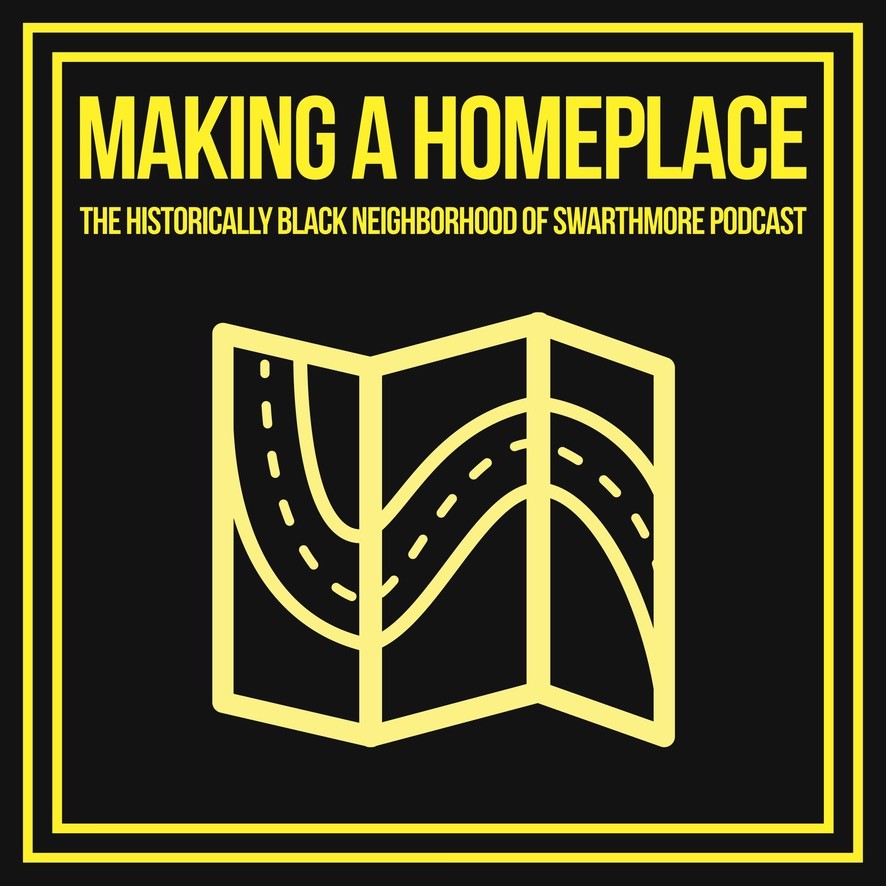
Display caption
Image: HBNS: Making a Homeplace Podcast Party Logo. Credit: Courtesy of PFP.
By Mackenzie Kwok
Jeannine Osayande wears many hats for Philadelphia Folklore Project (PFP), one of the “one of the country’s only arts nonprofits that is committed to sustaining living traditions. Osayande is a community member of Swarthmore, and a board member and interim director of the Philadelphia Folklore Project. In 2022, Philadelphia Folklore Project received support from Mid Atlantic Arts’ Folk and Traditional Arts Community Project grant for the podcast, Making a Homeplace: The Historically Black Neighborhood of Swarthmore (HBNS). The grant supported podcast production by Los Herederos, plus audio walking tours. Drawing from over fifteen years of community documentation by Osayande, the podcast highlights the lived experiences of Swarthmore’s historically Black community.
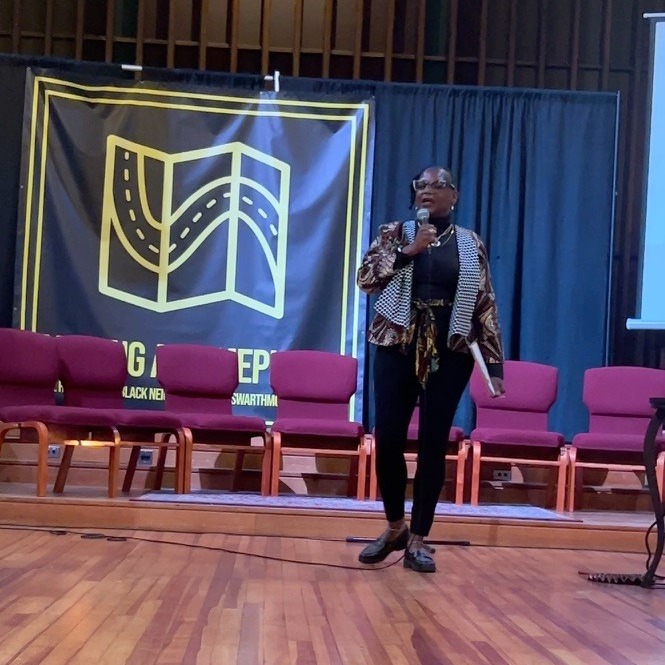
Display caption
Image: HBNS Podcast Listening Party 2023 at Park Ave Community Center, Jeannine Osayande. Credit: Courtesy of PFP.
How did you get involved in this podcast project?
My background is in African diaspora drum and dance traditions. I have a dance company called Drum and Dance Company called Dunya Performing Arts Company. We specialize in art and education. My connection with the folklore project was as this a teaching artist, but one day I show up and I’m talking to Deborah Kodish, who’s the founder of PFP, then the Executive Director. I was talking about my work, not just in African dance, but as someone living in this neighborhood, collecting these stories and turning them into performing arts pieces.
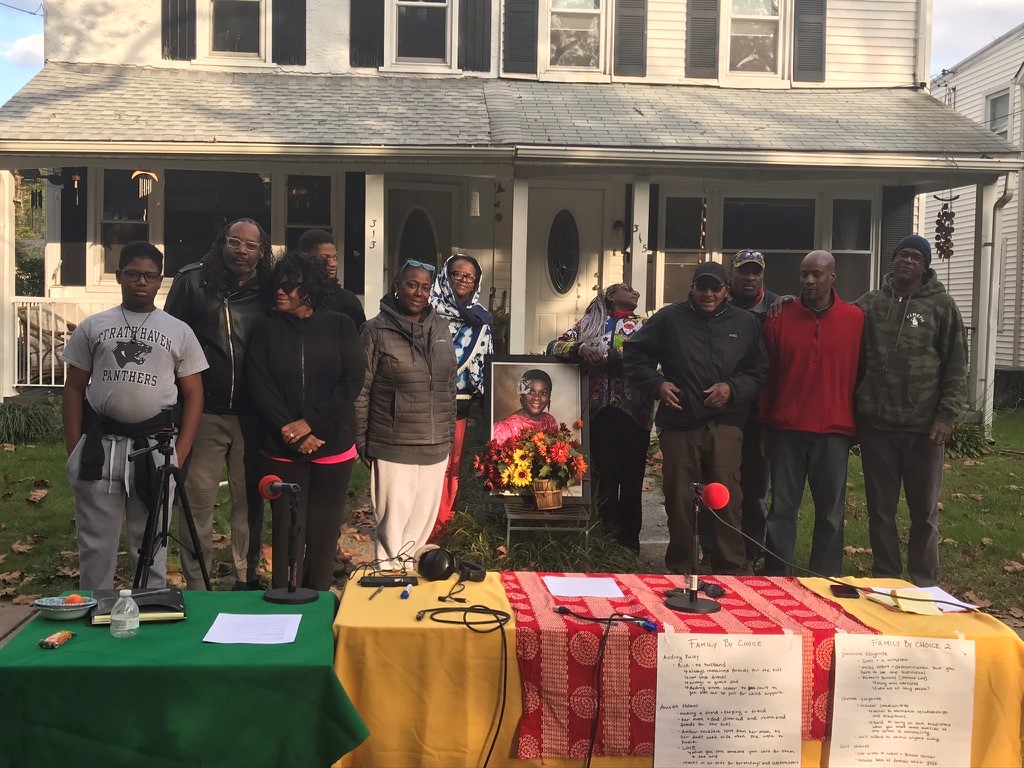
Display caption
Image: HBNS Community and Jeannine’s family at HBNS Oral History recording sessions, October 2020, Brighton Avenue. Credit: Jeannine Osayande.
She was like, “Hey, you should apply for a grant to do folklife documentation. We have a project with a cohort coming up in this coming year.” In my neighborhood, in the historically Black neighborhood of Swarthmore, there was a lot of cultural change that began to happen about starting about 15 years ago. It picked up quickly, which just has to do with old timers passing away and folks moving away, selling their homes, and a new look of gentrification started to take hold in the neighborhood. Who we are, our presence, our memories, our stories started to vanish. I felt this huge panic in that, and it brought me to talking with Deborah about documenting this story.
Why is auto-ethnography important to this project?
It’s placemaking. Before we called it that, I was gathering stories of the Great Migration, of our family, of my great grandmother, and how she migrated and came to our neighborhood– and then a story about my dad, who was a police chief of Swarthmore and first black policeman.
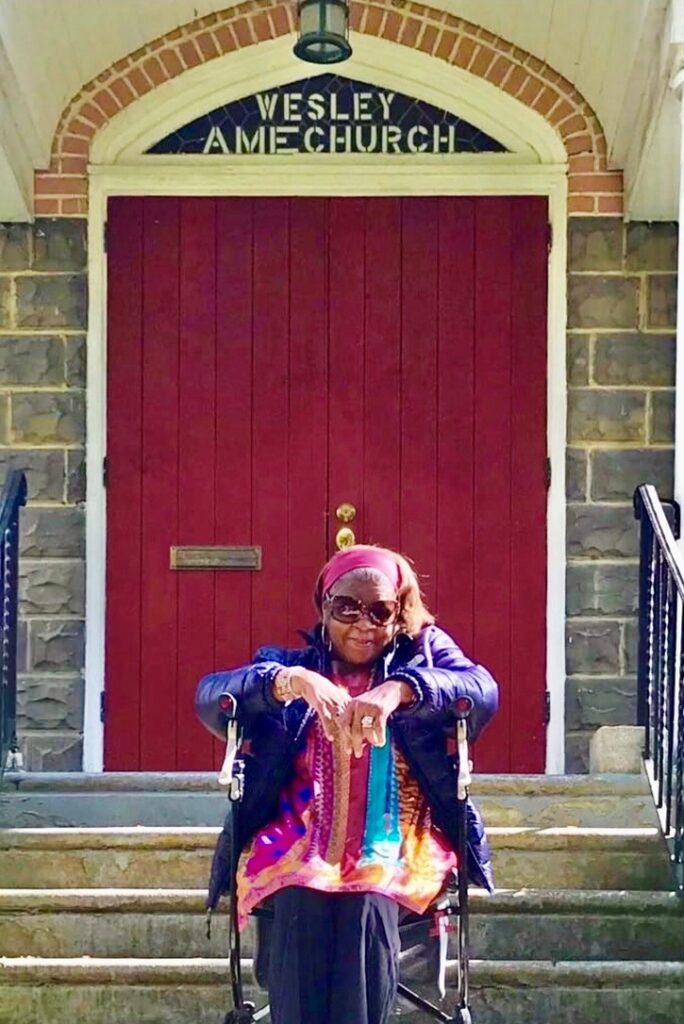
Display caption
Image: Wesley AME Church member, Betty Ann Wilson, Jeannine’s mother on Mother’s Day 2020. Credit: Jeannine Osayande.
This brought me into folklife documentation in 2010 in a yearlong course that brought in various folks from the Greater Philadelphia community. It was a life changing experience of learning how to collect stories of people and do oral history — history that’s important to you, to your family, to your community. I invited community members and family members to be part of the project. Once that happened, the power of having not just me going out to do the work, but doing it in collaboration with family and community, it’s almost hard to describe. You’re in charge of your story.
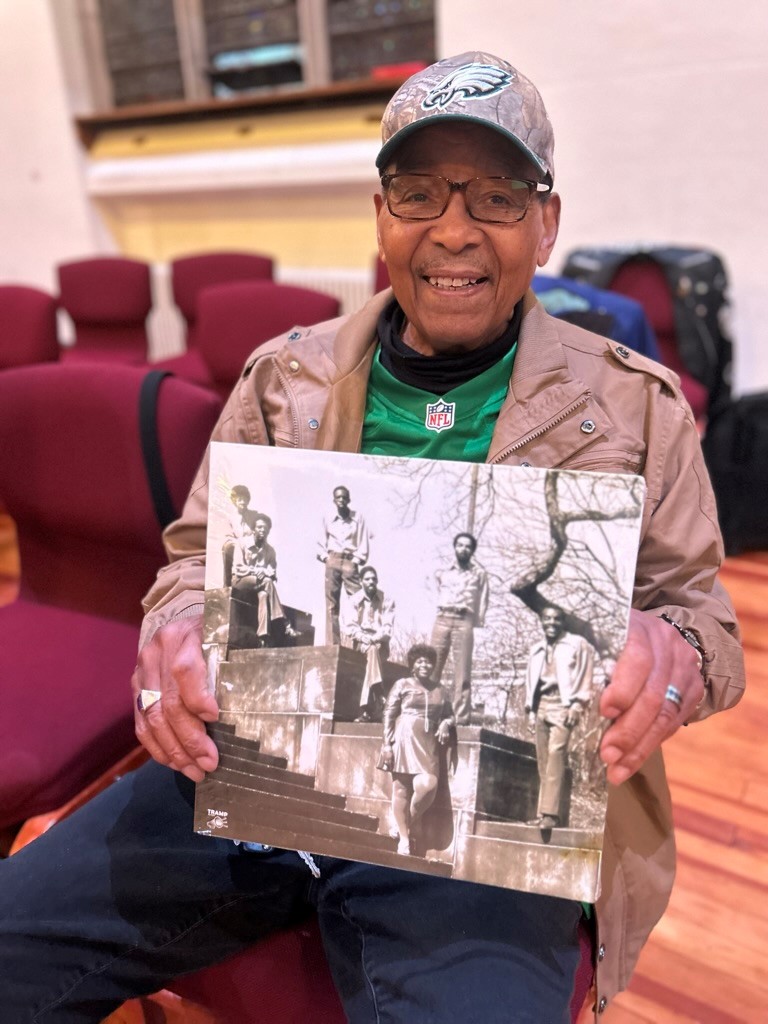
Display caption
Image: Community member Carl Holms, HBNS Resident at Podcast Party 2023 holding his Vinyl Album Cover of Carl Holmes and the Commanders. Credit: Jeannine Osayande.
I saw that our community was being written out of the history of Delaware County and Swarthmore. We were no longer living, people were dying. When people die, their stories die with them, unless someone is there to hear them and to find them interesting enough to retell those stories. As a community member, it became paramount for me that nobody’s gonna write us out of history. It’s important that in 200 years, our stories will be here because we helped to build the town. We were here before Swarthmore was Swarthmore. During the Great Migration, African Americans moved to Swarthmore from Maryland, from the Eastern Shore, from Virginia, and from Delaware. Having oral history is Black history every day.
Why is a podcast an important medium for these stories? What do you hope listeners will take away?
I want everyone to know our story. Our story has that opportunity to be international and just be shared throughout the world with anybody who is interested in stories about making homeplaces.
I want people to know that this is for absolutely everyone. I want people to be inspired to take their Android or iPhone, hit record, and just start asking questions to people, because that’s where a lot of discovery is made. I also want them to think about their communities as their historically Black neighborhood. Even living in Swarthmore, you’d be surprised. A lot of people who move into our neighborhood, including some folks who came to our listening party, didn’t even know there was a historically Black neighborhood. We want to say, welcome to the historically Black neighborhood, Swarthmore.
I also want people to know that collaboration is at the core. Over 40 individuals were involved in this podcast project: community partners, organizations, funders. It started with one idea, and with partnership between us all, we made it come to life by building relationships.
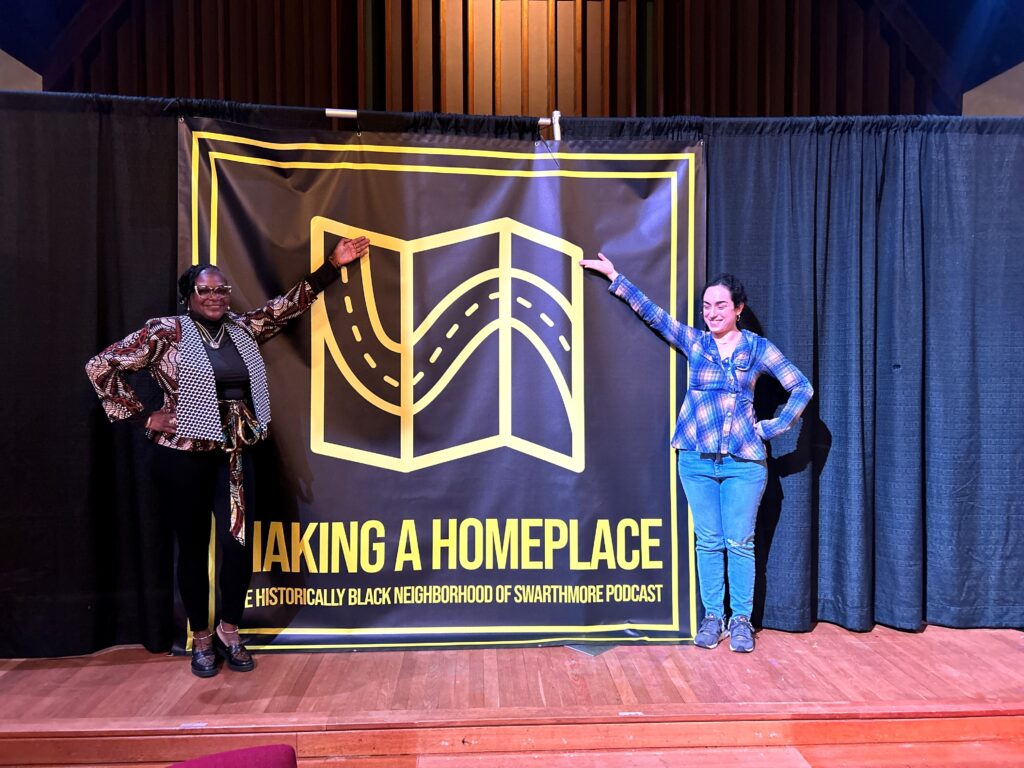
Display caption
Image: Jeannine Osayande and Naomi Strum-Wijesinghe (Former PFP Executive Director) at the HBNS Podcast Party at Park Ave Community Center 2023. Credit: Courtesy of PFP.
Where can people listen to this podcast?
We’re rolling them out into in two places right now if you if listeners go to or readers go to the Philadelphia Folklore Project website and click the podcast tab.
What are your hopes for Philadelphia Folklore Project in the future?
I hope PFP continues to knock down those doors that are shut for marginalized people. I hope PFP continues to strengthen these voices through collaboration in service of social change. People who create folk art and do folk work – you realize it’s who you are. Folklore can shine a light on your everyday existence. It is so significant and adds value not just to you and your family, but to your community and our society.
Historically Black Neighborhood of Swarthmore Community Council:
Naomi Strum-Wijesinghe, Former PFP executive Director
Jeannine Osayande, HNBS
Alicia Ruley-Knock, HBNS
Doris Ruley, HBNS
Elizabeth Lee-Holms, HBNS
Reverend Cathelene Brownlee, Wesley AME Church, Pastor
Arnold Adams, HBNS
Thaddus Adams, HBNS
Makeda Redmond, HBNS
Victoria Shelter, HBNS Swarthmore Alley